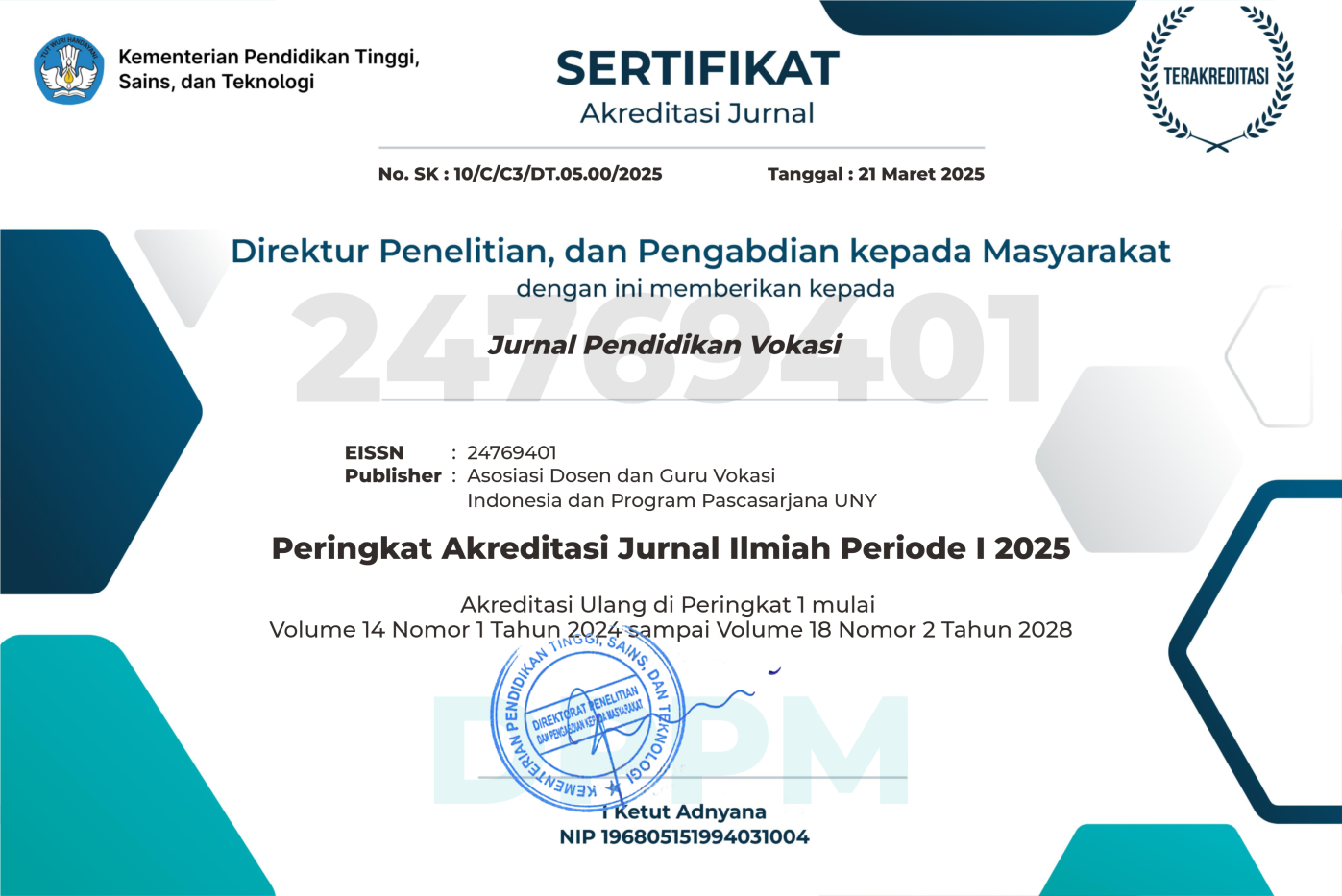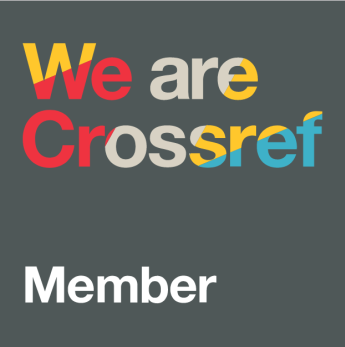Penggunaan pembelajaran inquiring minds what to know berbantuan multimedia pada mata pelajaran budidaya rumput laut
DOI:
https://doi.org/10.21831/jpv.v2i3.1044Keywords:
inquiring minds what to know, interactive multimedia, learning motivation and interest, understanding of the concept, seaweed cultivation techniqueAbstract
Penelitian ini bertujuan untuk mengetahui pengaruh penggunaan model pembelajaran Inquiring Minds What to Know berbantuan multimedia interaktif pada materi Teknik Budidaya Rumput Laut Metode Kantong terhadap a) motivasi belajar; b) minat belajar; dan c) pemahaman konsep siswa. Desain penelitian Quasi-Experiment ini adalah Single-Group Time Series. Penelitian ini dilaksanakan di SMK N 1 Pulau Laut Barat, Kalimantan Selatan. Subjek penelitian terdiri atas 20 siswa. Instrumen penelitian yang digunakan untuk mengumpulkan data adalah tes hasil belajar (pemahaman konsep), serta angket motivasi dan minat belajar siswa. Untuk mengetahui adanya pengaruh penggunaan model pembelajaran Inquiring Minds What to Know berbantuan multimedia interaktif terhadap motivasi belajar, minat belajar, serta pemahaman konsep siswa, data dianalisis menggunakan statistik nonparametrik dengan Wilcoxon Match Pair Test pada taraf signifikansi 5%. Hasil penelitian menunjukkan bahwa penggunaan model pembelajaran Inquiring Minds What to Know berbantuan multimedia interaktif pada materi Teknik Budidaya Rumput Laut Metode Kantong berpengaruh terhadap a) motivasi belajar; b) minat belajar; dan c) pemahaman konsep siswa.
INQUIRING MINDS WHAT TO KNOW LEARNING THE MULTIMEDIA AIDED EDUCATION SEAWEED
Abstract
The study aims to identify the impact of the use of an Inquiring Minds What to Know learning model assisted by interactive multimedia in the subject of Seaweed Cultivation Technique-Net Bag Method on students' a) learning motivation; b) learning interest; and c) understanding of the concept. The design of QuasiExperiment study is Single-Group Time Series. The research was held at SMK N 1 Pulau Laut Barat, South Kalimantan. The research subjects consisted of 20 students. The research instruments used to collect data were a learning achievement test (understanding of the concept), as well as questionnaires of student's learning motivation and interest. To identify the impact of the use of an Inquiring Minds What to Know learning model assisted by interactive multimedia on students' learning motivation, learning interest, and understanding of the concept, the data were analyzed with nonparametric statistical analysis technique by using Wilcoxon Match Pair Test at a significance level of 5%. The results of study show that the use of active learning of Inquiring Minds What to Know model assisted by interactive multimedia in the subject of Seaweed Cultivation Technique-Net Bag Method could give impact on students' a) learning motivation; b) learning interest; and c) understanding of the concept.
References
Asmani, J.M. (2011). Buku Panduan Pemanfaatan Teknologi Informasi dan Komunikasi Modern: Tips Efektif Pemanfaatan Teknologi Informasi dan Komunikasi dalam Dunia Pendidikan. Yogyakarta: Diva Press.
Dahar, R.W. (2011). Teori-teori Belajar dan Pembelajaran. Jakarta: Erlangga.
Djaali. (2007). Psikologi Pendidikan. Jakarta: PT. Bumi Aksara.
Heni A. Puspitosari. (2010). Membuat Presentasi Multimedia. Yogyakarta: Skripta Media Creative.
Hisyam Zaini, Bermawy Munthe, & Aryani, S.A. (2008). Strategi Pembelajaran Aktif. Yogyakarta: Pustaka Insan Madani.
Mayer, R.E. (2009). Multimedia Learning: Prinsip-prinsip dan Aplikasi. (Terjemahan Utomo, T.W.). New York: Cambridge University Press. (Original work published 2001).
Michael, J. (2006, June 23). Where's the Evidence That Active Learning Works?. Advances in Physiology Education, 30, 159-167. Retrieved October 14, 2011, from http://advan.physiology.org/content/30/4/159.full.pdf+html
Michael, J.A., & Modell, H.I. (2003). Active Learning in Secondary and College Science Classrooms: A Working Model for Helping the Learner to Learn. New Jersey: Lawrence Erlbaum Associates, Inc.
Silberman, M. (2009). Active Learning: 101 Strategi Pembelajaran Aktif. (Terjemahan Sarjuli, Adzfar Amar, Sutrisno, et al.). Massachusetts: Allyn & Bacon. (Original work published 1996).
Slavin, R.E. (2009). Educational Psychology: Teori dan Praktek. (Terjemahan Marianto Samosir). Boston: Allyn and Bacon. (Original work published 2006).
Turnbull, J. (2009). Coaching for Learning: A Practical Guide for Encouraging Learning. New York: Continuum International Publishing Group.
Winkel, W.S. (2005). Psikologi Pengajaran. Yogyakarta: Media Pribadi.
Woolfolk, A. (2009). Educational Psychology: Active Learning Edition. (Terjemahan Soetjipto, H.P. & Soetjipto, S.M.). Boston: Allyn & Bacon. (Original work published 2008).
Downloads
Published
How to Cite
Issue
Section
Citation Check
License
The authors submitting a manuscript to this journal agree that, if accepted for publication, copyright publishing of the submission shall be assigned to Jurnal Pendidikan Vokasi. However, even though the journal asks for a copyright transfer, the authors retain (or are granted back) significant scholarly rights.
The copyright transfer agreement form can be downloaded here: [JPV Copyright Transfer Agreement Form]
The copyright form should be signed originally and sent to the Editorial Office through email to jpvokasi@uny.ac.id
Jurnal Pendidikan Vokasi by http://journal.uny.ac.id/index.php/jpv is licensed under a Creative Commons Attribution-ShareAlike 4.0 International License.












